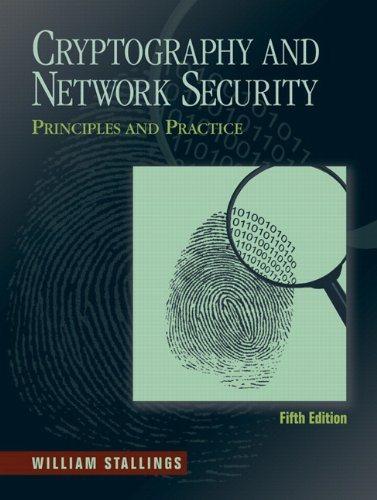Consider the following scheme by which B encrypts a message for A. 1. A chooses two large
Question:
Consider the following scheme by which B encrypts a message for A.
1. A chooses two large primes \(P\) and \(Q\) that are also relatively prime to \((P-1)\) and \((Q-1)\).
2. A publishes \(N=P Q\) as its public key.
3. A calculates \(P^{\prime}\) and \(Q^{\prime}\) such that \(P P^{\prime} \equiv 1(\bmod Q-1)\) and \(Q Q^{\prime} \equiv 1(\bmod P-1)\).
4. B encrypts message \(M\) as \(C=M^{N} \bmod N\).
5. A finds \(M\) by solving \(M \equiv C^{P^{\prime}}(\bmod Q)\) and \(M \equiv C^{Q^{\prime}}(\bmod P)\).
a. Explain how this scheme works.
b. How does it differ from RSA?
c. Is there any particular advantage to RSA compared to this scheme?
d. Show how this scheme can be represented by matrices M1, M2, and M3 of Problem 9.1.
Fantastic news! We've Found the answer you've been seeking!
Step by Step Answer:
Related Book For 

Question Posted:





